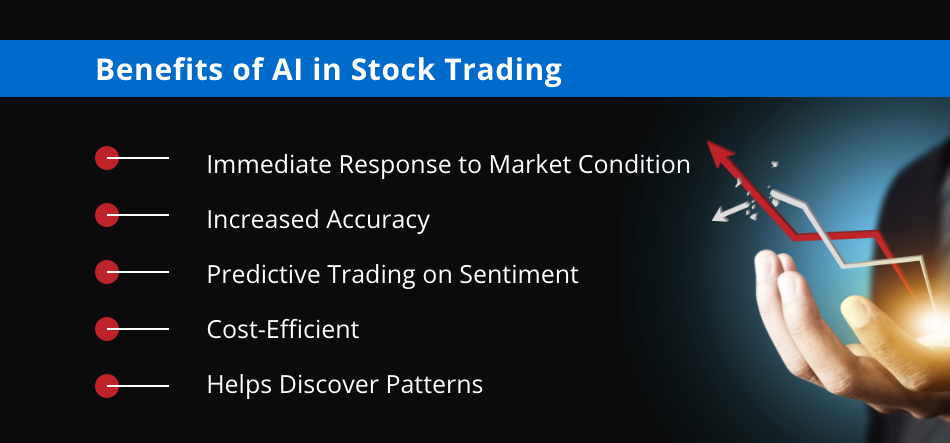20 Great Facts On Picking AI Stock Investing Platform Sites
20 Great Facts On Picking AI Stock Investing Platform Sites
Blog Article
Top 10 Tips To Evaluate The User Experience And Interface Of Ai Platforms For Trading Stocks
The User Interface (UI) and the User Experience (UX) within AI trading platforms that forecast or analyze stock prices play a crucial function in ensuring efficiency as well as satisfaction. Even if AI models are robust, a poorly designed interface can hinder decision-making. Here are 10 suggestions on how to evaluate the UX/UI.
1. The ease of use and the user-friendlyness are important factors to consider.
Navigation: Make it simple to navigate the platform, including menus, workflows and buttons.
Learning curve: Assess how quickly an individual can master a system and learn to use it without extensive instruction.
Make sure you have consistent designs (e.g. color schemes and buttons) across all platforms.
2. Check Customizability
Dashboard customization: Examine for the possibility of being able to customize dashboards so that they show the relevant information, graphs, and metrics.
Layout flexibility - Make sure that the platform permits users to the ability to rearrange or resize widgets and charts.
Check the platform's dark/light options, or your visual preferences.
3. Visualize Data
Chart quality - Ensure the platform includes interactive charts in high resolution (e.g. candlestick charts and line charts) and includes panning, zooming, and other features.
Visual clarity - Examine to determine if the data are clearly displayed, using the appropriate labels, legends or tooltips.
Real-time updates: Check if the visualizations are being updated in real-time to reflect the latest developments on the market.
4. Test Speed and Response
Time to load: Make sure that the platform is loaded quickly, even when dealing with large datasets or complicated calculations.
Real-time Performance: Check if your platform is able to process data feeds with no delay.
Cross-device compatibility : Make sure that your device is compatible with the platform (desktops, mobiles, tablets).
5. Evaluate Accessibility
Mobile application: Find out whether there's a fully-featured mobile application that allows trading while on the move.
Keyboard Shortcuts: Make sure your device supports keyboard shortcuts.
Accessibility features - Verify that the application is compliant with accessibility standards.
6. Use the Search and Filter Functions
Search efficiency: Make sure the platform permits users to perform to quickly search for stocks, indices or any other assets.
Advanced filters - Check to see whether you can apply filters, like by sector, market cap or performance metrics to limit the results.
Saved searches - Make sure that the platform allows you to save frequently used filters or searches.
7. Check for Alerts & Notifications
Customizable alerts: Users are able to create notifications that are specifically tailored to the conditions of their needs.
Notification Delivery: Check to see if notifications can be delivered in a variety of methods (e.g. via email, SMS or app notifications).
Make sure to check the alerts' time-to-date and accuracy.
8. Review the integration with other tools
Broker integration - Make sure that the platform seamlessly integrates with your brokerage to allow the quick execution of trades.
API access Find out whether APIs are available to advanced users looking to create custom workflows or tools.
Third-party Integrations: Verify that the platform is compatible with the other programs (e.g. Excel, Google Sheets and trading bots).
9. Check out the Support and Help Features
Tutorials on boarding: See if the platform provides tutorials or walkthroughs to new users.
Help Center: Make sure the platform offers a comprehensive and well-organized help centre.
Customer service: Check to see if the platform provides an efficient customer support.
10. Test to determine if Overall User Satisfaction is met
Reviews of user feedback: research reviews and testimonials to assess general user satisfaction with the platform's UX/UI.
Trial period - Test the platform for free trial to see how it works.
How does the platform deal with edges and errors?
Bonus Tips
Aesthetics. While the design of functional products is important, an appealing visual design can boost user satisfaction.
Performance under stress: Make sure the platform is stable and responsive during times of market volatility.
Forums and communities Forums and communities: Find out if the platform has forums or a community for users to discuss tips and feedback.
These guidelines will allow you to assess the user interface and user experience of AI trading platforms which predict/analyze stock prices. You can ensure they're efficient, in line to your specific trading needs and user-friendly. A well-designed UI/UX is a powerful tool that can aid you in making better decisions and trades. Check out the top inciteai.com AI stock app for website advice including ai stock market, ai stock picker, ai for stock trading, ai investment platform, ai investment app, investment ai, best ai stock, best ai for trading, trading with ai, ai for investing and more.
Top 10 Tips On How To Evaluate The Speed And Latency Of The Ai Analysis And Stock Prediction Platform
When looking at AI trading platforms that can predict or analyze price movements, speed and latency are crucial factors, especially for algorithmic traders and high-frequency traders. Even milliseconds delay can have a negative impact on trading execution. Here are the top 10 tips for measuring the speed of the platform.
1. Evaluate the Real-Time Data Feeds
Time to deliver data: The platform must provide precise, real-time data in a short period of time (e.g. with sub-millisecond delay).
Nearness of the data source: To reduce the time it takes to transfer data, make sure whether your server's servers are able to be situated near major exchanges.
Data compression: Check if your platform utilizes efficient data compression techniques to speed up the delivery of data.
2. Speed of execution test for trades
Order processing time It is the amount of duration it takes for the platform to process and complete trades once you have submitted an order.
Direct Market Access: Verify that the platform provides DMA. DMA is a feature that allows you to transfer orders directly to exchanges and without intermediaries.
Execution reports: Find out if the platform provides comprehensive execution reports, such as timestamps for the submission of orders, confirmation of orders, and fill.
3. Assess Platform Response
Speed of the user interface (UI) Test the speed at which your platform's user interface responds your inputs.
Chart updates Verify whether charts and visualizations are updated in real-time update without delay.
Performance of mobile apps When you're using a mobile app be sure that it is running just as fast as a desktop version.
4. Verify that the infrastructure is low-latency.
Server Locations: Use servers that are low-latency, and located close to major financial centers or exchanges.
Look for colocation options. These services permit you to place your algorithms near the exchange.
High-speed networks: Check if the platform is using high-speed fiber optic networks or technology with low latency.
5. Evaluation of Backtesting and Simulation speed
Find out how quickly the platform processes and analyzes the historical data.
Simulation latency: Make sure that the platform can simulate trades in real-time without noticeable delay.
Parallel processing: Determine whether the platform makes use of distributed computing or parallel processing to speed up complex calculations.
6. Evaluation of Latency in API
API response time It is the time at that an API platform responds to requests.
Rate limits: Make sure you know if API has acceptable rates limits in order to avoid delays in high-frequency transactions.
WebSocket support: Determine if the platform uses WebSocket protocols to support real-time, low-latency data streaming.
7. Test stability of the platform under load
High-volume trading to test the platform's responsiveness and stability, simulate high-volume scenarios.
Test the platform in times of high volatility on the market to make sure it is able to handle sudden changes in price.
Check the platform's tools to test your strategies under extreme conditions.
8. Evaluation of Connectivity and Network
Speed requirements for Internet: Ensure that your connection is at the recommended platform speed.
Redundant connection: Check to see if there are redundant connections.
VPN latency. Check to see if you're using VPN. Verify if you are using a VPN in the event that this causes latency.
9. Check for Speed Optimisation Features
Pre-trade analytics: Make sure that the platform has pre-trade analytical tools to optimize the route of your orders.
Smart Order Routing (SOR). Make sure that the platform uses SOR to identify the most speedy and cost efficient execution locations.
Utilize the tools of the platform to analyse and monitor the latency in real-time.
Examine the feedback of users and benchmarks
User reviews: Look for user feedback on the site to gain an understanding of its speed and latencies.
Third-party Benchmarks: Discover independent benchmarks that compare the performance of a platform against its competitors.
Case studies: Contact the platform to see if it has any cases studies or reviews that highlight its low latency capabilities.
Bonus Tips
Trial period: Try the demo or trial version for free to test the platform's speed and latency in actual scenarios.
Customer support - Check if there is a support service available for problems related to latency, optimization, or other issues.
Hardware requirements: Find out whether you require specific equipment to achieve the highest performance (e.g. high-performance PCs).
These tips will assist you in evaluating the speed of AI trading platforms which predict or analyze the prices of stocks. You will be able pick a trading platform that is the most suitable for the requirements of your trading and eliminates the chance of delays. Low latency trading platforms are crucial for traders who use high-frequency algorithms. The slightest delay can adversely affect their earnings. Check out the most popular ai for trading stocks advice for blog tips including invest ai, ai stock trader, stock predictor, ai software stocks, ai stock analysis, best ai penny stocks, best ai for stock trading, free ai stock picker, best ai penny stocks, ai stock analysis and more.